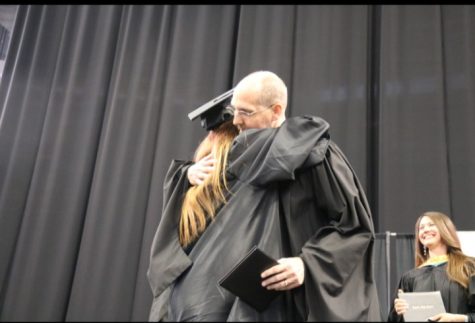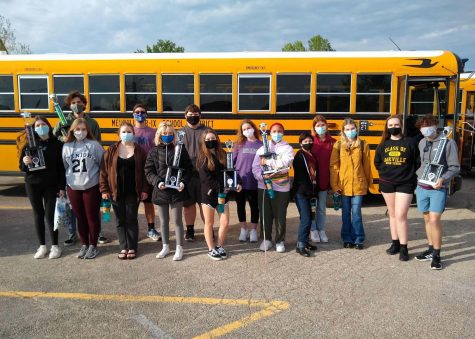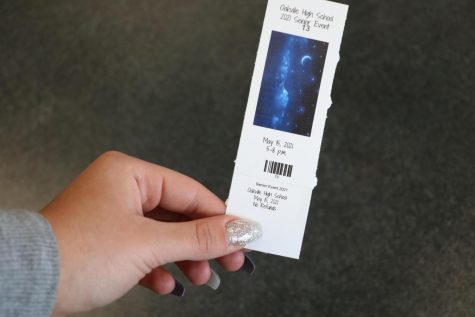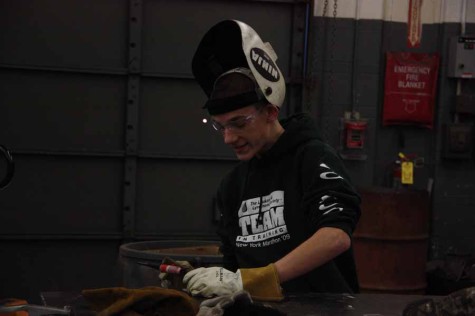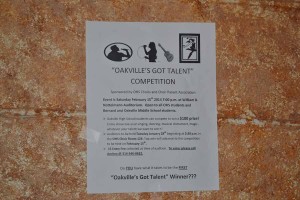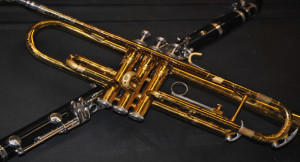From Auschwitz to the Arch-Part 1
I am a survivor… I was there, I suffered there, my family died there,” Noémi Ban says passionately, speaking of her time in the Holocaust.
When Hitler’s war against the Jews began, it started with ghettos. However, the Bans’ house was on the border of the ghetto so they did not have to move.
“We became prisoners in our own home,” Noémi said.
Other families were moved into their house, making it unbearably crowded. But the worst was yet to come.
Noémi’s father was sent away to a labor camp. The family did not have much time to grieve because not long after they were loaded onto cattle cars and sent to Auschwitz. There she was separated from her family. A man sent her into one line and her mom, siblings, and grandma into another line. In her documentary, Noémi recalled thinking “at least they’re together.” They were sent to gas chamber number five. That was the last time Noémi saw them.
Ban and the other women in her line were forced to undress. The only piece of clothing they were allowed to keep was their shoes. The soldiers shaved their heads, showered them, and gave them clothes of Jews who had already perished there.
Next they were lined up to be assigned to barracks.
“There were guards in the tower and guards all around us,” said Noémi. “They had big German Shepherds, and if anyone took even a step out of line, they would jump on them and attack.”
Each barrack had six rooms and over 100 people in them. They were very crowded, but not much time was spent there.
“Early morning to late at night, rain or shine, we were outside,” Noémi said.
The prisoners received no water and little to no food They were all rapidly losing weight. Breakfast and dinner was a cup of brown liquid they called coffee and one slice of bread made out of sawdust. Lunch was soup.
There would be 200 to 300 people in each breakfast line. The first person would be served, drink out of the bowl, and then it would be passed down the line. By the time it got to their group, many people had already had their mouths on it, so Ban and some of her friends could not bring themselves to drink it. “With the Nazis you either do what they tell you or else,” said Ban. “And we learned that the ‘or else’ was killing… so we started to drink [the soup].”
The Nazis also did not want to have to deal with the women’s menstrual cycles, so they put a medication in the soup to stop them.
“Lucky for me I had a strong body and good genes because when I got liberated, I got married and I have a family…but some of my friends are ruined inside,” Noémi said.
The horrors of Auschwitz did not stop there.
The prisoners would have to stand in line for hours. If someone fainted or fell down, they would be put on a truck and sent away. “The killing was every single day,” Ban recalled.
One day Noémi fainted, but she got lucky.
“I had treasures. I had friends,” Ban said. “One on my left, one on my right, and one behind me kept me standing straight…yes, even in this place there were human beings.”
Noémi spent four long months in Auschwitz before being sent away. The man who had separated her from her family chose her along with 1000 other Hungarian girls to be sent to Germany to help with the war effort.
“[After getting to Germany] we had to walk to a factory in the winter in prisoner outfits. No coats, no shoes…we were there to make bombs. It was horrible having to make bombs against those who were fighting to liberate us,” Noémi said.
The German soldiers in the next room did not speak Hungarian, so Ban and her friends decided to sabotage the bombs. “When–excuse me–those stupid Nazis heard us laughing in the other room, they thought we were having a good time working for them and did not come check on us.” Noémi said.
Ban remained in the factory for seven months, but eventually the time came once again to be relocated.
Noémi Ban and several of her peers decided to make a run for it. With a name like ‘the death march,’ escaping was their best option.
The women made the decision to take the most courageous journey of their lives. They were going to risk their lives in order to escape the Nazis.
“After seven months [of making bombs], they told us we had to go to a death march. We crept out one by one. I don’t know how we got the courage,” Ban said.
The suspenseful journey became even more stressful when the women heard noises coming closer. Their first thought was that the Germans had found them. Instead, it was their liberator.
“He said, ‘I know who you are. Don’t be afraid. I [will] come back. You are all free. This part of Germany has surrendered.’ It was a young, beautiful American soldier,” Ban recalled.
The American soldier came back the next day as promised.
“We hugged him, kissed him, thanked him, laughed, cried. He said, ‘Don’t suffocate me! You still need me,’” Ban remembered. “When he said ‘you are all free,’ I said I want to come to America to thank the American people. I don’t know the soldier—I am still looking for him.”
Ban did come to America eventually. After being freed, she traveled back to Budapest, Hungary in September 1945. She learned that her father had also survived and was reunited with him. Ban married, had two sons, and went to college, becoming a teacher shortly after.
Hungary was soon taken under Soviet control, which meant that once again they were living in the middle of a war. Ban and her family escaped to Austria. They left Austria, traveling to Germany and then boarding a ship in February 1957 to come to America. Eight days later, they had arrived at the American embassy. Her uncle had pledged to take care of them so they were allowed into the country.
As horrible of an experience as the Holocaust was, Noémi took it and turned it into something positive.

Class of 2014
Bio: Hi I’m Maddie Foster! I love fashion, shopping, music, my dog Summer and hanging out with my friends, especially eating ice cream...


